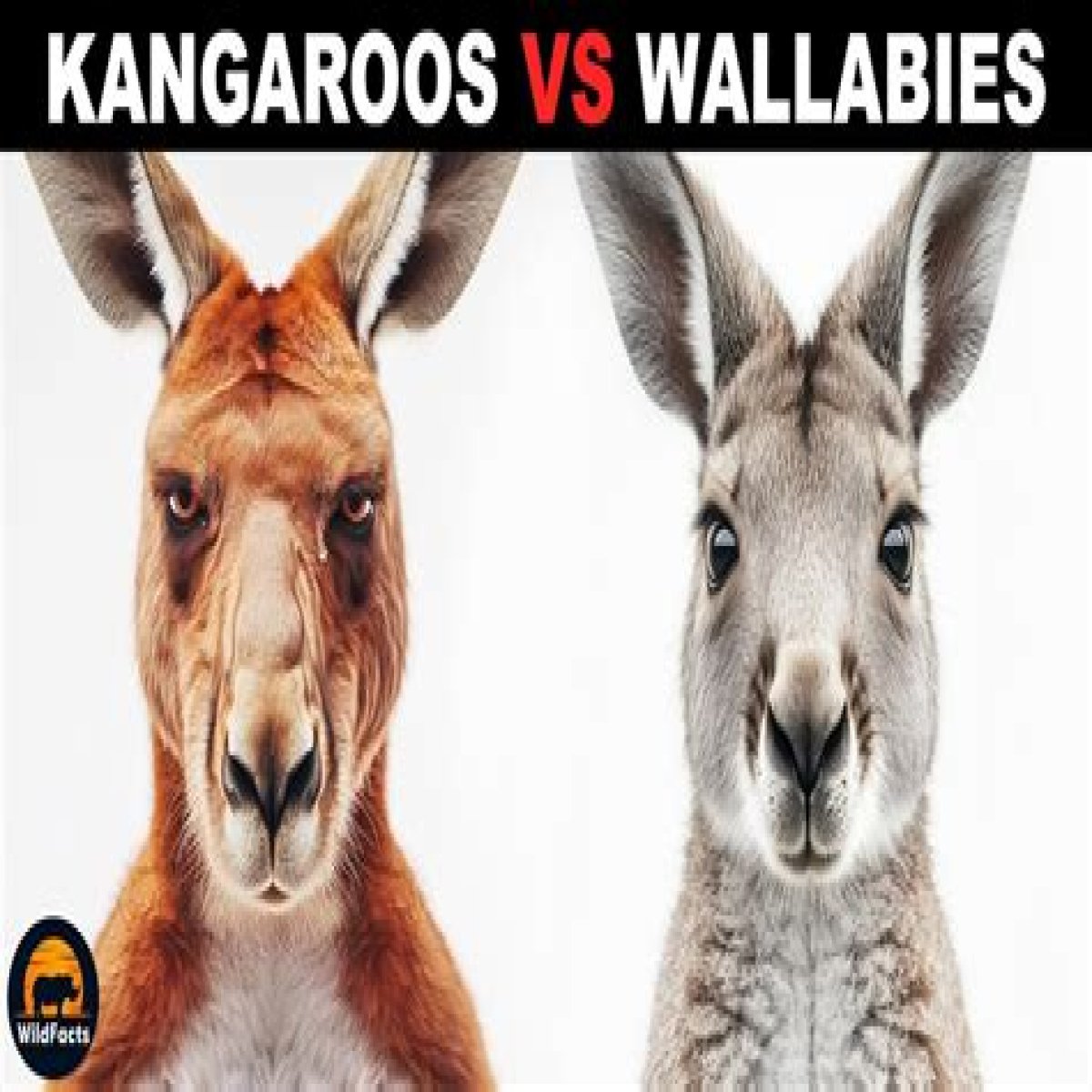If you're like most people, when you think of kangaroos and wallabies, you think of Australia. After all, the pouched marsupials with prominent hind legs are indigenous to the land Down Under. Or maybe you think of your favorite marsupial characters, like Kanga and Roo, friends of Christopher Robin and Winnie the Pooh.
Regardless of your associations, surely, you've wondered what the difference is between a kangaroo (Macropodidae) and a wallaby (Notamacropus). They look so much alike. They're both marsupials, meaning they're born as an embryo and are developed, carried and suckled in a pouch on the mother's belly. And scientists have even grouped them into the same order (Diprotodontia) and family (Macropodidae).
So what are the main distinctions between these two and how can you tell?
First, size. As a rule, kangaroos are much taller than wallabies. Kangaroos have a lot of length between their ankles and knees, which makes their legs seem out of proportion to their bodies. But there's a reason for that. Their legs are built for speed and hopping on open terrain. Kangaroos can grow as tall as 8 feet (2.4 meters) and weigh as much as 200 pounds (90 kilograms).
Wallabies, on the other hand, have more compact legs that are designed for agility in forested areas. Although there are many different species of wallabies, they tend to weigh no more than 45 pounds (20 kilograms) and rarely getting any taller than 3.2 feet (1 meter), excluding their tails.
Another easy way to identify a wallaby from a kangaroo is their color. A wallaby's coat is usually brighter with two to three different color variations. For example, the unfortunately named red-necked wallaby has a grayish belly with red markings on its shoulders. The kangaroo's coat is usually less splashy and more uniform, with muted colors of either brown or gray.
For a more scientific way to tell the two animals apart, you'll have to get these guys to open their mouths and say "Aaaah."
Wallaby and Kangaroo Teeth
If the guys on "CSI" and "Law and Order" can use dental records to identify human individuals, why not extend the same practice to animals? That's exactly what scientists have done. To be absolutely sure which animal you're dealing with, you have to compare their molars. Since the two species eat their meals in different habitats, their teeth have evolved over the years to suit the specific vegetable matter they consume.
Most wallabies live in bushy forests where they eat mostly grass, leaves and fruits. That means the wallaby needs flat teeth to crush and grind up what it eats. Unlike the kangaroo, it doesn't do much cutting, so its crowns are less pronounced. However, the wallaby does retain a single cutting tooth on the top of its mouth for any occasional cutting needs. It also keeps its premolars, while the kangaroo sheds his.
The kangaroo, which lives in more open treeless areas, eats mainly leaves and grass. They have curved teeth, as opposed to flat teeth like the wallaby, to help them slice stalks of grass in their mouth. The kangaroo's molars also have higher crowns than the wallaby's.
If you can't figure out if you're looking at a wallaby or a kangaroo, we don't recommend going and opening its mouth to give it a good oral checkup. One last thing you can do to narrow it down is just consider whether you're in kangaroo or wallaby habitat. Odds are one won't be in the other.
Originally Published: Mar 11, 2008
Wallaby vs Kangaroo FAQ
Are kangaroos and wallabies the same?
Are kangaroos dangerous to humans?
Are wallabies aggressive?
Are wallabies part of the kangaroo family?
Can wallabies jump?
Lots More Information
Related Articles
Sources
- Australia Zoo. "Mammals: Kangaroos vs. Wallabies." Feb. 3, 2006. (Feb. 12, 2008)
- Bush Heritage Australia. "Wallabies." (May 12, 2022)
- Fountain, Lesley. "America Zoo: Brush-tailed Wallaby." 2005-2006. (Feb. 13, 2008)
- Kangaroo Island Tours Australia. "What is the difference between a Kangaroo and a Wallaby?" (May 12, 2022)
- Myers, P. "Macropodidae." Animal Diversity Web. 2001. (Feb. 13, 2008)
- National Geographic Kids. "Eastern Gray Kangaroo." 1996-2008. (Feb. 12, 2008)
- National Geographic Kids. "Wallaby." 2008. (Feb. 12, 2008)
- Smith, Dave. UMCP Berkeley. "Marsupial Mammals." Oct. 10, 2005. (May 12, 2022).
- Thomas, Oldfield. "Catalogue of the Marsupialia and Monotremata in the collection of the British Museum (Natural History)." London: Order of the Trustees, 1888.
- Tyndale-Biscoe, Hugh. "Life of Marsupials." Australia: Csiro Publishing, 2005.
- Wilson, Don E. and DeeAnn M. Reeder, eds. Mammal Species of the World. A Taxonomic and Geographic Reference (3rd Ed). Johns Hopkins University Press. (Feb. 13, 2008)
